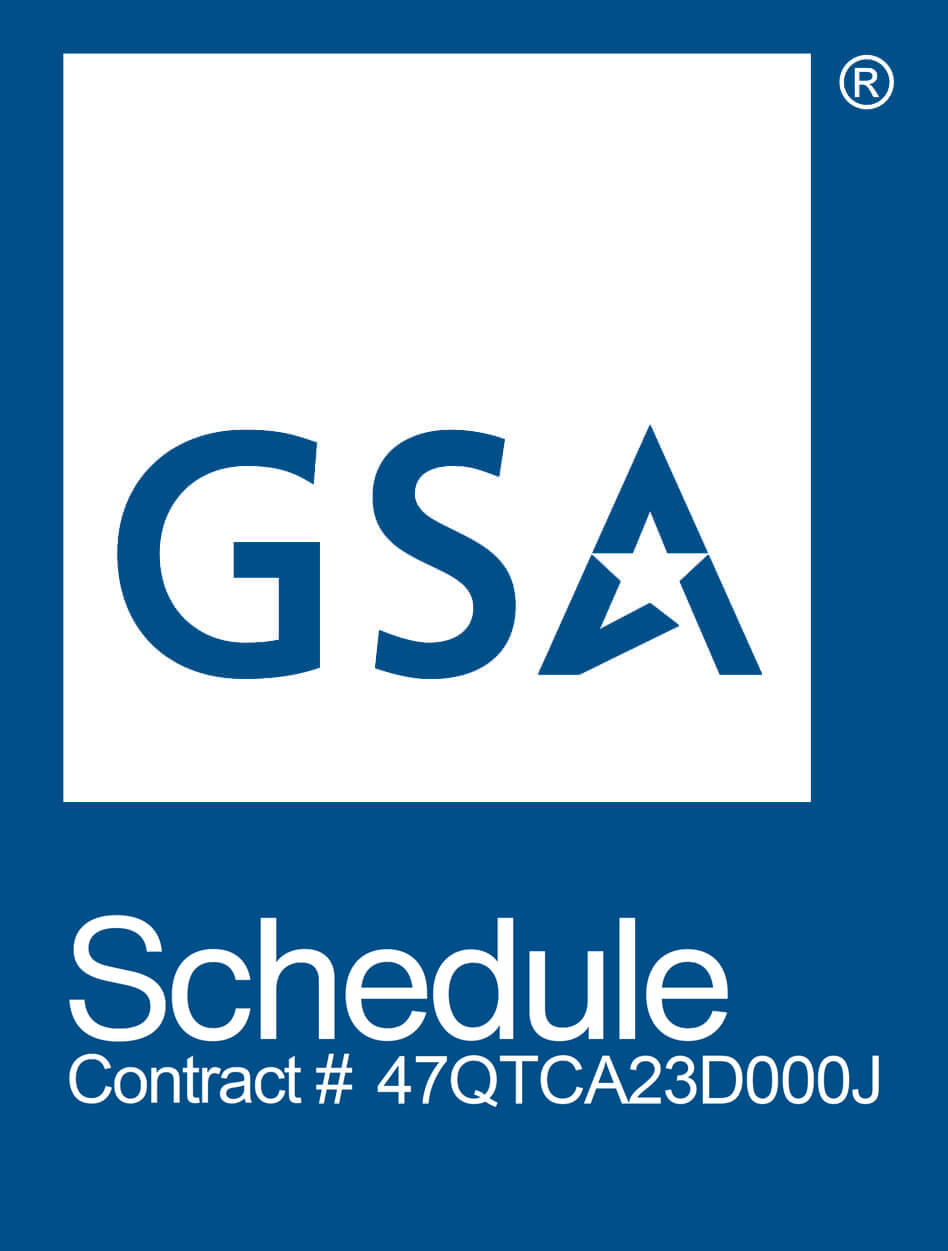
Broadband Solutions for High Speed Rail
The regular rail services or air travel cannot compete with High Speed Railway or HSR in terms of their speed of transportation of passengers. Some of the best features that HSR offers to customers include on-time, comfortable, secure, and safe commuting. But a major source making these properties and offerings possible is the extensive and widespread growth and availability of wireless communication. The most modern and advanced technologies that prevail in the current era allow for the passengers as well as the trains to be connected to the internet through wireless communication networks. Broadband solutions for high speed rail can equip the commuting method with everything it requires for efficient performance.
The connection between trains and railroad control centers, and data centers is crucial for the security and safety of the passengers. Provision of fail-proof wireless communication capabilities ensuring an uninterrupted connection through all different conditions pertaining to the weather, structure, or geography is significant. The HSR technologies that aim at efficiently controlling and monitoring operations of high speed railways and delivering broadband solutions that are extensive and complete to passengers are here and not a thing of a future anymore.
To equip your HSR with the most advanced broadband solutions for high speed rail and state-of-the-art train control operations, without compromising the provision of rich broadband solutions and services to the passengers, get in touch with Cloud Computing Technologies, which has a number of successful national level contracts under its portfolio. Positive Train Control and effective and efficient system designs, and advanced wireless communication systems that utilize cognitive radios and LTE-R are CCT’s specialties. They are highly specialized and experts in providing broadband solutions to high speed railway networks regardless of their geographical or structural complexity.
It has been several years since the deployment of high speed railways began. The traditional railway is not a competition for the discussed entity anymore as it is now in the process of taking over domestic as well as international flight operators in terms of offering and providing passengers with utility. However, HSR could not have been where it is today, with its focus solely on quick transportation. Efforts and advances had to be made in making sure that its passengers were secure and safe during commute as well and were provided with features and components that enhanced their convenience during travel. These components and features, without any hesitation, include entertainment offerings and internet services that are rich and seamless at the same time.
Service-Disabled Veteran-Owned Small Business (SDVOSB)
Small Disadvantaged Business (SDB)
Small Disadvantaged Business leads to enhanced innovation and creativity, as these businesses often offer unique perspectives and solutions shaped by their diverse backgrounds. Moreover, partnering with Small Disadvantaged Business can provide access to specialized skills and capabilities that might otherwise be overlooked, contributing to improved competitiveness and efficiency.
Challenges That High Speed Railway (HSR) Currently Face And Their Remedies
The success of the operations that HSR undertook required such services to be incorporated into them as their key and integral part. They were enabled and allowed only by huge advances and strides in the technologies pertaining to wireless communication. However, installed track network limitations dictating the path of mobility in an HSR channel model that is non-stationary inhibits the true potential that a high speed railway is capable of functioning at. If the infrastructure network of a train connects through wires with the train, the approach is downright unfeasible and inefficient.
The extreme temperature environments, harsh physical vibrations, and lines that are high voltage do not allow for media that is physically guided to be suitable for HSR communication networks. The wireless communication standards remediate this issue swiftly but not without being integrated into the systems in a proper and successful manner. They also have to be highly robust and extremely reliable, along with being equipped with efficient signaling and train control applications.
Another challenge that the HSR faces is that monitoring and diagnostics as well as video surveillance (off-board and on-board) applications are rapidly moving towards getting more and more bandwidth-intensive. Due to the rising complexity of such applications, the prioritization of data is also gaining significance. For instance, offering passengers entertainment services, such as video streaming, demands a much higher data rate than the control operations of trains, but the latter is definitely of a higher priority than the former.
The broadband solutions for high speed rail are much less prevalent in the US than in Europe. A major reason for that is likely to be that most of the high speed railway in the country was used for freight carriage until much later, while the European high speed trains were started being used to assist passengers in high volumes. To reverse the situation, there is an acute need for HSR operators in the United States to move towards reliable and agile broadband solutions, like the ones CCT offers, so that the sector can progress rapidly with increased usage, productivity, and profitability.
Broadband can not only provide passenger as well as freight high speed railway the capabilities associated with high speed and wireless communication network, but it can also offer efficient safety and train control services and enhance the performance of the network through Positive Train Control and Cognitive Radio, respectively.
High speed trains are only high speed when they run at a speed of 200 kilometers per hour or above. At such high speeds, it is always challenging to ensure stable and uninterrupted communication between trains and their respective base stations. Some of the biggest villains in this regard are cell handovers, channel effects, and propagation, etc. Terrain topology, railcar construction, as well as obstacles occurring along the sides of the tracks, such as buildings and foliage, etc., also hinder the wireless communication network efforts. High node mobility is another factor that makes the task difficult. Though with network heterogeneity to fill the gaps, connectivity can be offered to the passengers in a seamless manner.

Transforming for Innovation, Sustainability and Security
Requirements in High Speed Railway Pertaining to Communication
High speed railway looks at reliable access to broadband and channels of communication that are reliable as a vital part of their operations. Communications play an imperative role in many HSR domains, such as telematics, diagnostics, and control. When there is no communication between dispatch centers, train control, level crossings, signaling zones, and trains, the HSR is considered ‘disconnected.’ communication between trackside equipment and railcars is also a component that is crucial for efficient service provision. All these communication domains do not demand a data rate or bandwidth that is lavishly high. However, there is an acute need for this real-time connection to be extremely robust, seamless, uninterrupted, and reliable. The train operators need to employ these advanced and modern systems of communication to minimize the chances and potential of errors that humans can often make.
Network Architecture and Control and User Plane
The traffic integrity requirements of trains suggest that the access to broadband can be divided into two different planes. The first is the control plane which enables the traffic to focus the train, and the second is the user plane that dictates the traffic to focus passengers. The services of the former plane are made provisions for the diagnostics data, signaling, control, and telematics of trains, while the latter plane is all about data pertaining to infotainment, games, video streaming, browsing the internet, and VoIP, etc. The second plane requires bigger volumes of bandwidth as compared to the first, the control plane. But the control plane is responsible for the safety of the passengers, and safeguarding the delivery and integrity of the traffic boasts higher significance. This requires the communication systems to conduct a careful and well planned, and thought-out trade-off between the two planes.
There are a number of ways the trad off can be carried out efficiently and effectively. The use of a plane decoupled architecture allows the wireless network to be managed more easily and in an enhanced manner by allocating a wide band spectrum and a higher frequency along with the division of the user plane. This enables the systems to be more reliable while increasing the capacity and the potential of the network. With the plane division of data signaling and control, the U-plane is able to leverage wideband networks that offer improved handover features, and the C-plane is limited to the narrowband wireless communication network.
Due to the progress of the train from a specific cell to a different one, the occurrence of the handover takes place. This happens faster and more often in the case of high speed railways, which requires the optimization of the number of handovers that take place through an algorithm that is highly efficient. This can be achieved, and the performance can be significantly enhanced by the decoupling of the C-plane and the U-plane and implementing an LTE-R architecture. Formerly, the coupling of the planes used to be performed with the help of legacy network systems that were unsuitable for the cause as they gave way to congestion of traffic. This hindrance was very troublesome in cases when there was a lacking pertaining to the management functionality of a network that was optimized.
LTE-R, however, performs this task by leveraging a much more efficient SAE (System Architecture Evolution) that divides both the planes in a logical manner. The resulting planes that have been separated from one another are consequently controlled by gateways and MME (Mobility Management Entity). This just leaves one problem at hand, which is the absence of lack of physical division of the traffic that is accumulated.
Transforming for Innovation and Sustainability securing future competitive advantage
Macrocells that are more efficient in their connectivity offerings un bands of lower frequency, and more reliable in their provision of coverage are what operate the legacy systems. The bands that have frequencies that are higher leverage Pico and Femtocells that are smaller in size and are more vulnerable towards propagation. This limits their ability to cover areas that are far off but are a good resource for user plane traffic due to their higher capacity. This means that the user plane traffic that is user intensive is better handled with small cells, and the control plane traffic should be supported with macrocells.
The high speed railway’s architecture pertaining to its network of communication is very much like the topology of a tree. The access network forms the base while the service providers are at the top, with the aggregation network located in the middle. Let us take a look at the modern trends of the HSR access networks related to wireless communication.
Wireless Communication Evolution in the Access Network of the HSR
The wireless communication systems of the HSR are complicated due to the H and S in them. This has compelled technology providers to put a significant focus on the communication that is train-to-ground. The deployments of HSR could not be served or supported by the traditional methods, systems, and processes of communication. The speeds of the trains call for track installations and systems that are special and technologically advanced, and efficient, including but not limited to viaducts and maglev. The infrastructure that high speed railway employs is also drastically different from the one that the traditional rail uses. Thus the communication infrastructure also had to be modified.
The deployment design and network pertaining to the older systems were not appropriate to support the broadband solutions for high speed rail, and the technology that they were compatible with was not fit enough for the purpose either. In today’s digitally advanced world, railway operations can be effectively made safer through several available control systems that include:
- Positive Train Control (PTC)
- Incremental Train Control System (ITCS)
- Command, Control and Communication Systems (CCCS)
- Advanced Train Control System (ATCS)
- Communication-Based Train Control (CBTC)
These systems define characteristics of transmission for the network with respect to the below-mentioned parameters:
- Failure probability of call establishment
- Time for call set up or delay in connection establishment
- Break during a handover and its maximum duration
- Connection loss probability
- Rate of data
- Delay from one end to another
- The power of signals received
Virginia High Speed Railways and California High Speed Railways were deployed in the US, giving way for the standards of new technologies and several different strategies and requirements to be analyzed. The latest and the most modern technologies have the capacity to handle all unfavorable situations and challenges, such as ensuring timely operations, maintaining profitability and safety, standardization of communication, designing of the tracks and new rail cars, obstacles arising during installation of new infrastructure, equipment, and systems, and the effects of the wireless environment.
Before we move on to discuss these advanced technologies in detail, we need to understand that designing strategies to implement these systems without compromising on the cost-efficiency and to maintain them so that they continue to optimally provide quality services is a complex and challenging endeavor. Only technology companies that are highly experienced in carrying out and managing grand and highly responsible operations can be relied upon to handle such incorporation. Broadband solutions for high speed rail are not generally things that can be applied over any existing infrastructure. The primary, as well as the supporting technologies, have to be compatible with the broadband software, tools, resources, and equipment used for the systems. There are a number of factors that need to be analyzed, and the exact requirements and needs of a high speed railway company have to be taken into account to devise and come up with efficient plans that are tailor-crafted accordingly.
Only people who are specialized in this regard and hold a lot of experience can carry out the task in an effective manner. The technology and systems implemented need to be long-term, and there should be no compromise on their performance. If you are a high speed railway company, regardless of the size, services you offer, or the location you operate in, get in touch with Cloud Computing Technologies today to make the most modern and technologically advanced broadband solutions for high speed rail enhance the services you offer. With seamless internet and broadband connections for both your user-plane and control-plane, you can operate in a much more reliable manner. Wireless communication and broadband solutions are areas that CCT specializes in, and by partnering with the company, you can make your business more productive, profitable, and future-proof.
GSM was extended to create GSM for R (railways) by redirecting its focus on the provision of interoperable and cost-effective digital communications protocols that are standardized to serve the operations of rail. For this purpose, wireless communication systems that were fully digital were made to replace the analog systems that were conventionally and formerly used. There was a need, however, for the network to adhere to some train communication factors, including but not limited to radios that run only on data, addressing that depended on location, service offerings to passengers, communications within local areas, remote broadcasting in case of emergencies, capabilities pertaining to telemetry as well as shunting, train control that was fully autonomous, and communications that were control driven, etc.
Generative AI Software Integration
Boost your business efficiency with our custom Generative AI Business Software, tailored for HR, finance, sales, event management, and customer service. Leveraging advanced natural language processing and AI-driven data science, we specialize in customer segmentation, sales analysis, and lead scoring. Elevate your operations and gain a competitive advantage with our precision-driven AI solutions. Contact us to integrate AI seamlessly into your key systems and transform your business.
What clients say about Cloud Computing Technologies
★★★★★ 5/5
"CCT's diverse skills and expertise has reduced our technical debt by millions of dollars to which we have reinvested into future capabilities."

Mrs. Hanson
★★★★★ 5/5
"With CCT migrating our critical systems into the AWS, 80% our staff is now remote working."

Mrs. Miller
★★★★★ 5/5
"CCT showed us how to meeting regulatory compliance in AWS Landing Zone and greatly improved our cloud security controls."

Mrs. Wilson
★★★★★ 5/5
"CCT provided our agency with application rationalization services and successfuly applicaton migrations meeting all KPIs and SLAs."

Federal Agency
★★★★★ 5/5
"I highly recommend the data science team at CCT. They are technically proficient, great communicators, unbiased, and reduced our false positives by 68%."

Mr. Brown
★★★★★ 5/5
"The team at CCT is knowledgable and insightful in developing a cloud architecture leading to our mission success."

Mr. Robinson
Both voice and data are supported on GSM-R. There was no standard for combining voice and data over a digital channel prior to the advent of GSM-R. With a circuit-switched Time Division Multiplexing (TDM) network, GSM-R offers multilayer preemption and precedence. This allows the network to prioritize data from the control plane above data from the user plane. It’s a narrowband technology that works in the 800-900 MHz frequency range.
IEEE 802.11, more popularly referred to as Wi-Fi, was first introduced 25 years ago. This is the most often utilized network technology for in-train broadband connectivity. Wi-Fi uses the ISM 2.4 GHz or 5.8 GHz frequency bands, which are both license-free. It can handle a lot of traffic and has a lot of capacity per user. Packet loss on in-train Wi-Fi is extremely low. When combined with the widespread availability of Wi-Fi-enabled devices, such as laptops and smartphones, train operators have a perfect answer. IEEE 802.11 is a protocol family that today encompasses 802.11a/b/g/n/ac specifications. Because of the tiny cells, terrestrial Wi-Fi connectivity from high-speed trains is difficult. Wi-Fi also has a limited coverage area (typically 250 – 450 m). Interoperability is difficult due to the high frequency of handovers and the lack of a standard method for implementing Wi-Fi handovers.
The GSM-R/2G network is being phased down in favor of 4G. WiMAX, and now WIMAX-2, have played a key role in the evolution of 4G networks. It acts as a backhaul network for major high-speed rail networks, providing infrastructure support. WiMAX was raised to the 4G category with the introduction of WIMAX-2. Much research on WIMAX and its use for railroad situations has been undertaken over the years, including our group’s testbed in Crete, NE, which was created and run in partnership with BNSF and with the Federal Railroad Administration assistance.
In a 300 km/h high-speed train setting with high data rates, the network functions well. Long Term Evolution (LTE), developed by 3GPP, is another 4G technology. In the business market, LTE-enabled architectures and devices are now kings. For any vehicle communication technology, LTE can serve as a backbone core network or as an access network. Because of LTE’s dynamic characteristics, train operators and other relevant businesses have been forced to use it in their systems. Compared to WiMAX, LTE has a few benefits. Existing GSM-R/TETRA networks can be simply updated to LTE-R, the railroad-specific extension of LTE because it can operate across a variety of different bandwidths.
Mobile Ethernet is an Ethernet extension provided via a leaky cable or radiating cable used for trains. Mobile Ethernet enables routers and switches to learn and adapt to communication, reducing the number of needless broadcasts. As the access network, the cables follow the maglev rails and transmit RF signals. Inside the train, the Mobile Router (MR) serves as an access point. With Network Mobility Extensions for Mobile-IPV4, Shinkansen LCX access points can provide uplink and downlink capacity of 0.7 Mbps on average (NEMO-v4). However, using IPV6 with LCX and Infrared, the objective is to attain 1 Gbps capacity (IR). The IR has a bandwidth of 1 Gbps and a range of 300 meters. Because of their short range, IR cables are more prone to handover failures than LCX cables. Using in-train Infrared Communication Devices (IR-CD) and the Network Mobility Basic Support Protocol (NEMO BS), however, the system may be monitored for quick handover.
Because of a lack of terrestrial communication infrastructure, SATellite Communication (SATCOM) systems are often employed in sparsely inhabited areas. For airborne traffic, this kind of communication is also necessary. However, the benefits and drawbacks of SATCOM must be addressed for fast-moving users on the ground. When used in conjunction with aggregation networks, communication satellites provide a large coverage area, allowing Internet access. Train communication is most typically achieved via geostationary Earth Orbit (GEO) satellites. GEOs are used in railway networks despite their considerable propagation latency of more than 500-600 ms and high installation costs. Non-line-of-sight zones such as steep terrains, severe weather impacted zones, tunnels, and even heavily populated metropolitan areas are not covered by SATCOM signals due to a restricted frequency band selection. Train operators use “gap fillers” in such situations to eliminate disruptions and achieve smooth connections.
Experience and Agile Expertise
you can trust
Years in business
20
Contracts Awarded
180
+
The US Federal Railroad Administration (FRA) authorized the use of Positive Train Control (PTC) after a train disaster in California in 2008. (PTC). Rail-Cognitive Radio (Rail-CR) is a useful tool for optimizing PTC performance. With locomotives, command centers, and signaling, PTC must maintain continuous train-to-trackside communication. Through “bandwidth sniffing,” an AI-based Software Defined Radio (SDR) can make judgments and has adaptive learning capabilities, allowing it to continually grow and stay aware of the wireless environment. If necessary, SDR can provide the system with immediate free bandwidth. Rail-flexibility CR’s is based on continuous monitoring of well-defined parameters such as coding for correction of errors, throughput, packet size, type of modulation, bit rate, carrier frequency, and so forth. Action, choice, orientation, and awareness are all part of the learning cycle.
A Policy Engine (PE) is used to prevent the system from accessing frequencies that are outside of its permitted range. The PE oversees bandwidth selection based on specified criteria. The newest railway communication trend is to transition to lower frequency bands, primarily to improve control plane efficiency. SDR was forced to adopt a lower frequency range due to the overuse of higher frequency spectrums. Case-based reasoning and a genetic algorithm are two strategies used by SDR to enhance network management with the Cognitive Engine (CE). A cognitive engine collects physical data or parameter values from database entries and learns from previous judgments using its optimization algorithm. On the other hand, Genetic Algorithms (GA) are a sort of machine learning optimization method [24]. Under the current circumstance, the CE of this system monitors a set of SDR setups. If the results fall below a certain level, CE tries a new scenario based on previous data. If no previous experience is available that is suited for the current situation, the GA is used to build and enable a new strategy, which is then added to the historical data collection.
How CCT Can Help
As mentioned in earlier sections, individual wireless standards confront a number of difficulties. The majority of these are caused by physical factors such as train car construction, extreme temperatures, high voltage, shock, and vibration. Signals from trackside equipment have also been seen not being able to reach the interior of trains due to glass and window materials. More RF waves are also shielded by contemporary railcars. Fading, channel loss, and quick handover are some of the channel impacts seen. The resulting rapid amplitude and phase fluctuations, wideband signal dispersion, inter-symbol interference, multi-carrier signal attenuation at the sub-carrier level, and “strong delayed reflection,” which is common in satellite communication, can all contribute to signal loss for fast-moving transceivers.
However, whether it is channel propagation issues or ones caused by a handover, Cloud Computing Technologies offers swift and easy broadband solutions for high speed rail. CCT specializes in equipping high speed railway systems with the most technologically advanced and cutting-edge tools and broadband resources that ensure seamless and efficient connectivity. This ensures that the safety of your trains is optimal through uninterrupted connection with the control station and the customer experience of the passengers becomes top-notch. Regardless of the nature of HSR internet issues, CCT’s wireless communication systems and infrastructure can remedy them at market-competitive pricing. Contact Cloud Computing Technologies now to gain an edge over your competitors by equipping your trains with the best and most modern broadband solutions for high speed rail.
Final Thought with Broadband Solutions for High Speed Rail
The physical design of the trains, the geographical environment along their routes, and the wireless environment have to be evaluated jointly to be able to come up with solutions to challenges that HSR faces. Due to the closely-knit interdependence of all of these factors and components, broadband solutions to address the internet and connectivity issues that come up have to be incorporated into careful strategies. For passengers of high speed railways to be offered broadband connectivity that is seamless and train control to be provided with the same, HSR companies need to hire wireless communication networks and technology providers that are highly experienced in the area.
There is also a need for the broadband solutions company you opt for to be able to custom-design strategies to fulfill your exact and unique needs. The key factor in equipping HSR with wireless broadband access is a solution that is dedicated and heterogeneously configured, leveraging advanced technologies. This can allow concurrent control of the train operations as well as communication services for users. Gain broadband solutions for high speed rail from Cloud Computing Technologies.
Further information about Broadband Solutions for High Speed rail.
Frequently Asked Questions
Broadband plays a crucial role in high-speed rail systems. It provides reliable and fast connectivity for onboard internet access, real-time communication, system monitoring, and data collection. Broadband ensures a better travel experience for passengers and enables effective system management for operators.
With our deep expertise in network solutions, CloudComputingTechnologies.AI helps you select the most suitable broadband solution for your high-speed rail system. We assess your exact needs, advise on the best available options, and assist with the implementation and maintenance, ensuring seamless and high-quality connectivity.
A robust broadband solution enhances passenger experience through high-speed internet access, enables real-time communication for security and updates, supports onboard entertainment services, and allows for efficient system monitoring and problem detection. These advantages can attract more passengers, increase customer satisfaction, and reduce operational issues.
Choosing a broadband solution requires consideration of several factors including your system’s size and coverage, the speed and reliability of the connection, the scalability of the solution, the cost, and the potential future expansion of your rail system.
Not necessarily. While a certain level of technical understanding can be beneficial, the team at CloudComputingTechnologies.AI specializes in communicating complex information in a clear, easy-to-understand way. We also provide comprehensive training and ongoing support to ensure you feel confident managing your broadband solution.
Broadband solutions designed for high-speed rail systems incorporate strong security measures, including robust encryption protocols, to protect data and communications. Additionally, CloudComputingTechnologies.AI prioritizes security in every solution we deliver, and we stay updated with the latest advancements in cybersecurity to keep your system secure.
At CloudComputingTechnologies.AI, we work to minimize disruption during the implementation process. We meticulously plan every step, coordinate with your operations schedule, and perform work during off-peak periods where possible.
Implementing a broadband solution dramatically enhances the customer experience in a high-speed rail system. Passengers can enjoy uninterrupted internet access, real-time journey information, and digital entertainment services, which improves their overall satisfaction and loyalty.








